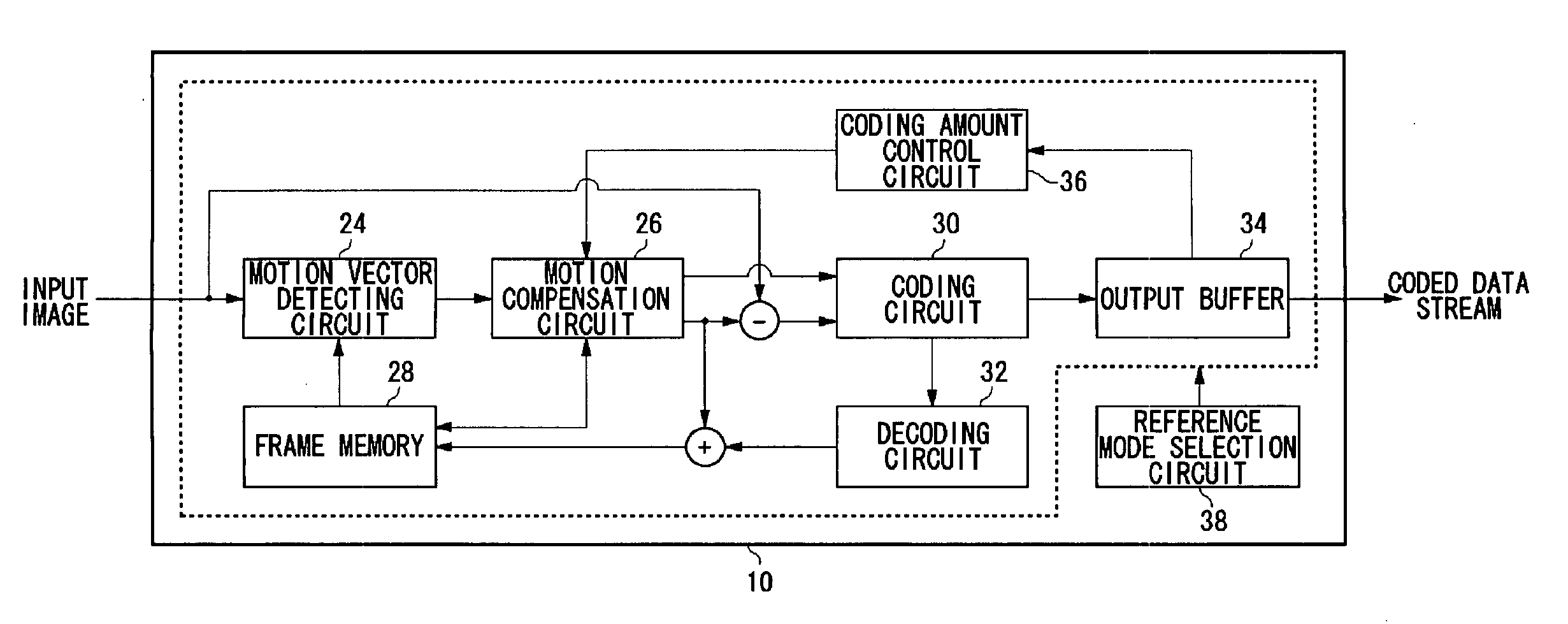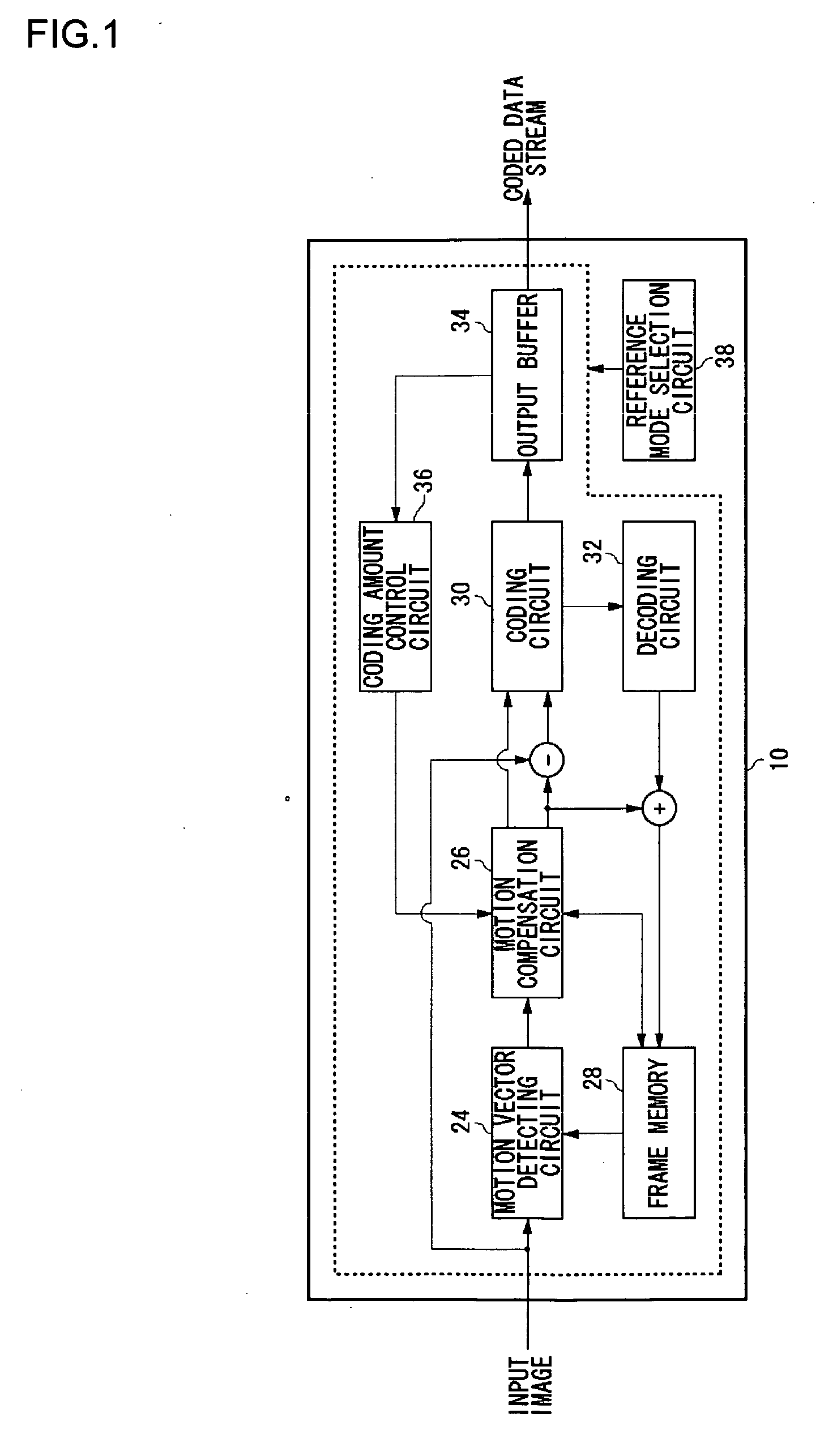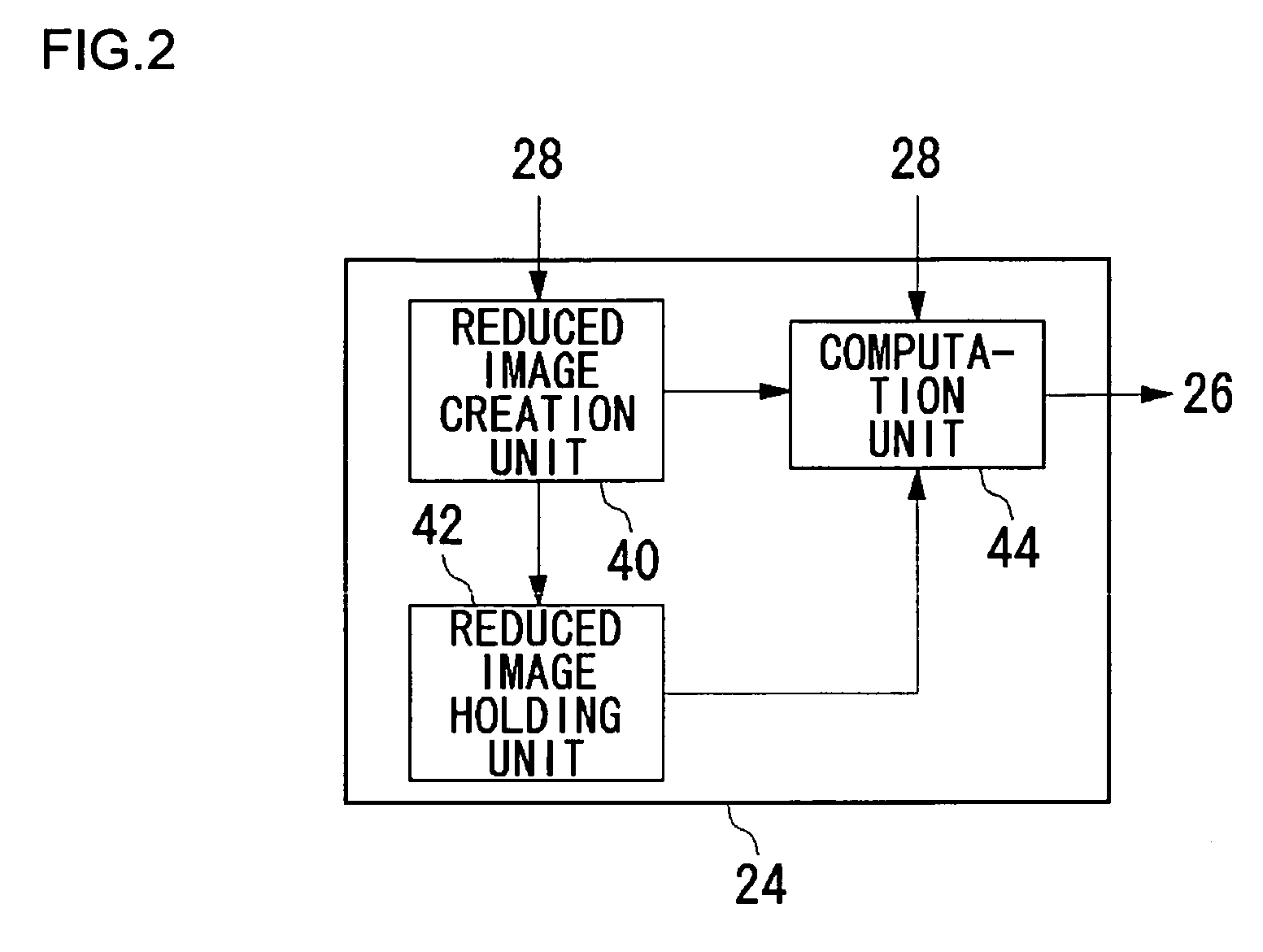Motion vector detecting device
a detection device and motion vector technology, applied in the field of motion vector detection technique, can solve the problems of increasing the amount of data transmitted, reducing the processing speed of compression coding, and affecting the efficiency of coding processing, so as to reduce the time needed and improve the processing efficiency
- Summary
- Abstract
- Description
- Claims
- Application Information
AI Technical Summary
Benefits of technology
Problems solved by technology
Method used
Image
Examples
first embodiment
[0032] With an image coding device according to an embodiment of the present invention, first, a reduced image at a reduced resolution is created based upon an image which is to be coded. Then, a rough motion vector (which will be referred to as “approximate motion vector” hereafter) at a low resolution is detected based upon the reduced image. Subsequently, the motion vector is detected based upon the original image at a high resolution with reference to the approximate motion vector. The present invention offers a technique which can be applied to such a hierarchical motion vector detection method, and which improves the motion vector detection speed while reducing the memory access amount.
[0033]FIG. 1 shows an overall configuration of an image coding device 10 according to an embodiment of the present invention. The image coding device 10 includes a motion vector detecting circuit 24, a motion compensation circuit 26, frame memory 28, a coding circuit 30, a decoding circuit 32, ...
second embodiment
[0059]FIG. 7 is a configuration diagram which shows a coding device 100 according to an embodiment. This configuration can be realized by hardware means, e.g., by actions of a CPU, memory, and other LSIs, of a computer, or by software means, e.g., by actions of a program having a function of image coding or the like, loaded into the memory. Here, the drawing shows a functional block configuration which is realized by cooperation between the hardware components and software components. It is needless to say that such a functional block configuration can be realized by hardware components alone, software components alone, or various combinations thereof, which can be readily conceived by those skilled in this art.
[0060] The coding device 100 according to the present embodiment performs coding of motion images stipulated by: the MPEG series standard, which is a member of the ISO / IEC family of standards; the H.26x series standard, which is a member of the ITU-T family of standards; or ...
PUM
 Login to View More
Login to View More Abstract
Description
Claims
Application Information
 Login to View More
Login to View More - R&D
- Intellectual Property
- Life Sciences
- Materials
- Tech Scout
- Unparalleled Data Quality
- Higher Quality Content
- 60% Fewer Hallucinations
Browse by: Latest US Patents, China's latest patents, Technical Efficacy Thesaurus, Application Domain, Technology Topic, Popular Technical Reports.
© 2025 PatSnap. All rights reserved.Legal|Privacy policy|Modern Slavery Act Transparency Statement|Sitemap|About US| Contact US: help@patsnap.com



